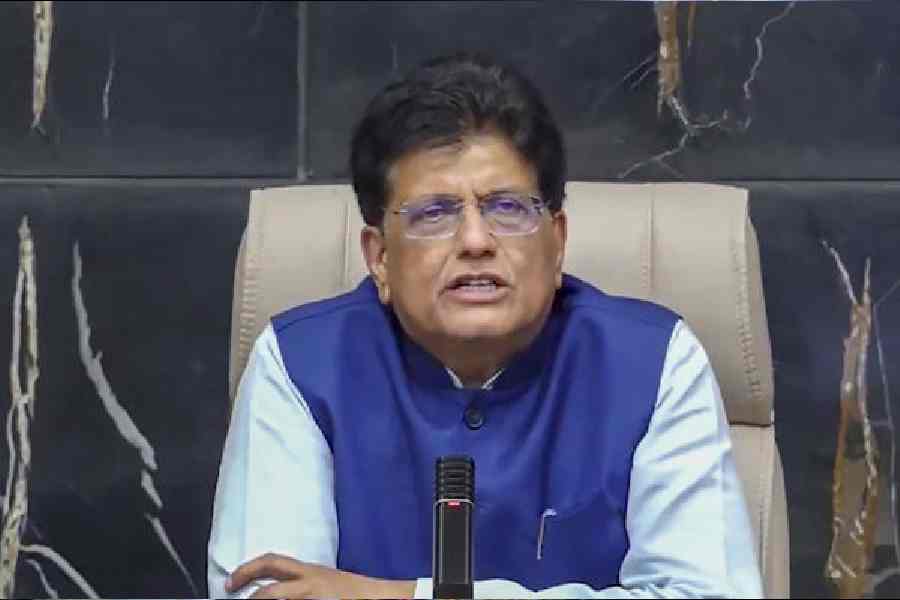 |
| Antaheen (below) won Aniruddha Roy Chowdhury the 2009 National Award for Best Film Pix: Subhendu Chaki |
 |
They are the new stars of the Bengali film industry and they all have one thing in common. These directors have made movies that have been commercially successful and also hailed by the critics — and, astonishingly, they’ve never had a flop.
Take a look at director Aniruddha Roy Chowdhury. He made a smashing debut with Anuranon (meaning resonance in Bengali) which picked up the National Award for Best Feature Film in Bengali in 2008. That was followed by Antaheen (The Endless) which also walked away with a National Award for Best Film in 2009.
Cut to Srijit Mukherjee who jolted film-loving audiences with his debut film Autograph starring Prosenjit Chatterjee and Nandana Sen, which opened to packed theatres last year. The film’s success almost immediately made him a star director who turned out a different type of cerebral cinema. Now, he has taken a leap in an entirely different direction and is ready with a crime thriller Baishe Sraban, starring Prosenjit Chatterjee, Raima Sen and Parambrata Chatterjee, which is about to release.
The Bengali film industry has been undergoing a transformation of sorts in the last five or six years and directors like Roy Chowdhury and Mukherjee are at the vanguard of these changes taking place. They’ve made movies with fresh subjects — and also raked in bigger returns than ever before.
The success is also about the return of urban audiences to movie theatres and that’s reflected in the movies that are being made. Says Shrikant Mohta of Shree Venkatesh Films: “These directors have treated their subjects in a manner that the youth have been able to believe in and easily connect with.”
 |
| Srijit Mukherjee is heading in a new direction with his crime thriller Baishe Sraban Pix: Rashbehari Das |
 |
A typical example of a movie that couldn’t have been made a decade ago is Kaushik Ganguly’s Arekti Premer Golpo in 2010 that dealt with the subject of homosexuality and starred Rituparno Ghosh and Indraneil Sengupta. Ganguly first made his presence felt with Jackpot in 2007 which was a light-hearted romantic film. More recently he has scored again with Rang Milanti, a youth film with fresh faces like Gaurav Chakrabarty and Indrashish Roy. Says Ganguly: “What’s working in favour of my films is the fact that I deal mostly with urban subjects.” His next movie, Laptop, scheduled to release in January next year is even more clearly aimed at urban audiences.
Tollywood’s leap into the New Age of multiplex movies aimed at an urban middle class has brought many new players into the game. Take Mumbai-based Sujit P. Mondal who started his career in Bollywood assisting director Vikram Bhatt and who has now turned his attention in Bengali cinema.
Right from his first film Saat Pake Bandha (2009) with Koel Mullick and Jeet there has been no looking back for Mondal. Following this were two smashing hits — Bolo Na Tumi Amar and Sedin Dekha Hoyechilo.
But ask him the secret of his winning hits and he laughs. “It has to be an out-and-out entertaining film complete with picturesque locations and fantastic music. And since Calcuttans have a ear for music, it works well with my films.” Right now, he’s busy giving finishing touches to his latest love story Romeo, which releases in Diwali this year.
On an even bigger scale there’s Raj Chakraborty who has become a veritable hit machine whose forte lies in giving age-old love stories a new kind of spin. The result is a slew of hits starting with Chirodini…Tumi Je Aamar (2008) followed by Challenge, Prem Amar and Le Chakka.
 |
 |
| A former St. Xavier’s teacher, Kaushik Ganguly has turned his focus on young urban films like Rang Milanti Pix: Rashbehari Das |
He came up with Dui Prithibi late last year starring Jeet, Dev and Koel Mullick and most recently Shatru with Jeet in the lead. Currently, however he’s busy developing the script for his next venture, Debi Chaudhurani, a period film based on Bankim Chandra Chattopadhyay’s novel of the same name. And does he have a magic formula? “An engaging storyline and smart packaging seem to be primary contributors for the success of these films,” he says.
Smart packaging is working in favour of Rajib Biswas too, another one of Tollywood’s hit directors who has given a slew of hits, starting with his first film Dujone (2009) starring Dev and Rajib’s actress wife Srabanti. Then, there was Amanush (2010) with Soham and Srabanti and then Paglu in June this year with Dev and Koel Mullick. Says Rajib: “Each film is a step ahead in life. Though I consider proper packaging integral to today’s filmmaking, a director should also know how to engage the audience with good themes and stories.”
Actor Prosenjit Chatterjee who has acted in Mukerjee’s Autograph as well as Baishe Srabon and also in Roy Chowdhury’s latest film says: “I worked in this industry even when it was going its worst phase. But today it gives me immense pleasure when I see young crowds queuing up to watch Bengali films.” Actor Gaurav Chakrabarty agrees: “Earlier there used to be either the Rituparno Ghosh kind of films or the more mass-oriented Swapan Saha films. However, today the line between commercial and parallel cinema has blurred and directors are open to taking risks.”
But the good times crucially depend on the fact that the top directors are making fewer compromises than before — and producers are more willing to spend money. Says Ganguly: “My films’ success was also due to the fact that producers had faith in my subjects. After all it’s the filmmaker’s vision that gets reflected in the end product.” Rajib too says that now producers are willing to spend bigger sums for locations and shot-taking. “In my first film Dujone, I spent Rs 5 lakh for a train sequence, which is quite high by Bengali film standards,” he says.
 |
 |
| Raj Chakraborty’s next project will be based on Bankim Chandra Chattopadhyay’s classic novel Debi Chaudhurani |
Roy Chowdhury has just returned after a two-month stint in the US shooting in places like San Francisco and Half Moon Bay in California for his next film Aparajita Tumi. Similarly, Rajib spent 32 days shooting Milan and Berne for Paglu which was made on a budget of Rs 5 crore. He’s also gearing up to shoot his next film Idiot in Australia. Chakraborty too wants to make Debi Chaudhurani an Indo-Bangladesh project.
Says producer Mahendra Soni of Shree Venkatesh Films: “Today, movie-makers are spending large sums on songs and publicity. Five years ago an entire film could have been made in that amount.” But all the directors agree that the amazing record of hits is partly to do with the fact that producers are now willing to spend up to 40 per cent to 50 per cent of the budget on the look of the movie and locations. This is despite the fact that there is a risk involved in spending more. Earlier, because movies were made on shoestring budgets it was easier to get their money back.
Adds Ashok Dhanuka, chairman, SK Movies: “Bengali cinema has suddenly become glamourised and to make it more glitzy we are increasingly exploiting foreign locales.”
The overall budget of Bengali films too has sky-rocketed. Roy Chowdhury’s latest film Aparajita Tumi is the costliest till date with a budget of over Rs 9 crore. That’s compared to his earlier two films, which were made for Rs 1.5 crore each — though even that figure was more than what was spent in the old days.
 |
 |
| Mumbai-based Sujit Mondal (abovet) started his career in Bollywood assisting director Vikram Bhatt |
Similarly, Chakraborty’s last release Shatru, an action-flick, was made at a budget of Rs 3 crore and it raked in Rs 3.35 crores. And Ganguly’s latest film Rang Milanti took Rs 1.5 crore to make and Laptop is being made with Rs 1.7 crore. Says Srabanti: “Looks-wise today you can’t say that Bengali films are lagging behind costly Bollywood productions. These directors know that for a film to be successful at the box office, one has to be perfect in every department of filmmaking.”
The result is that the directors don’t have to make as many compromises. Roy Chowdhury, for instance, has hired ace sound designer Biswadeep Chatterjee from Mumbai to do the sound for his latest film. He says, “Young filmmakers are willing to experiment with every little technical detail. I have also used the latest cameras like the Arri Alexa to shoot my film.” Meanwhile, Chakraborty is even talking ambitiously about making his next movie in 3D.
And experimentation has been the name of the game for Mukherjee who shot Autograph on the cutting-edge RED cameras. For his latest film Baishe Sraban too he has tried the latest camera techniques. He says, “I have used a Canon 5D camera and used a body rig in which the camera is attached to the body of the rig. It was primarily used to shoot hallucination and murder scenes. The film is also shot in the dark alleys and bylanes of Calcutta so we had to experiment with lighting as well.”
 |
| Rajib Biswas has roped in Bollywood actor Aditya Pancholi for his next film |
These directors have come from different professions. While Roy Chowdhury is from the ad world, Mukherjee is an economist who quit his job in Bangalore recently. Ganguly was a teacher at St. Xavier’s and Chakraborty made 11 telefilms and directed hit reality shows before turning to films.
The directors are thinking on an even bigger scale about the future. Rajib has announced his next film Bande Mataram. And Roy Chowdhury wants to nurture more young talent under his production company, Screenplay Films. Ganguly is still reading scripts and says, “I have a nightmare that what if one day I cannot think about something new. That day I will surely retire. But for now it’s only the craft of filmmaking which I am passionate about.”
Can the winning run of these directors continue? It’s against all the odds of the filmmaking industry. But for the time being the cameras are rolling and so are the good times.










